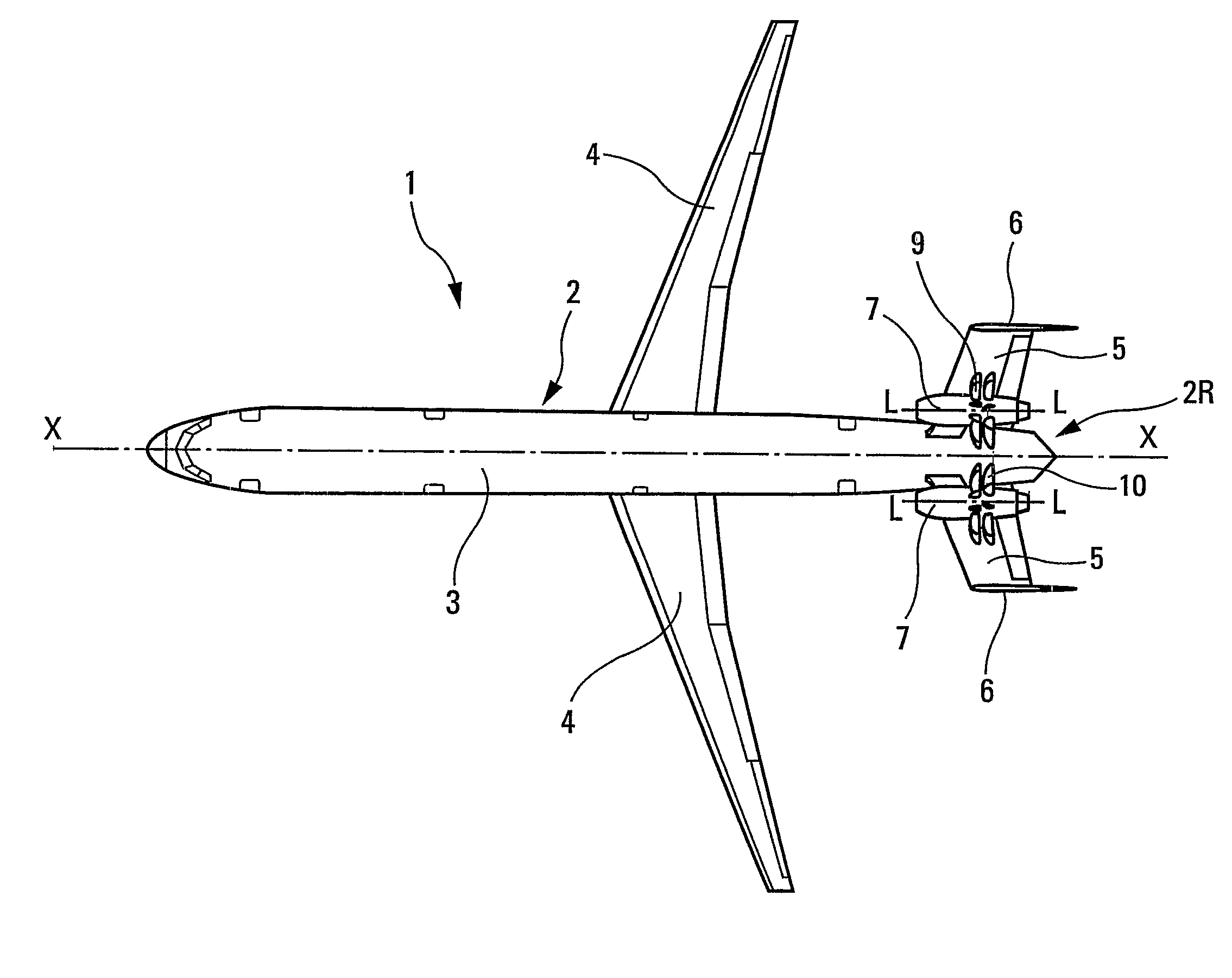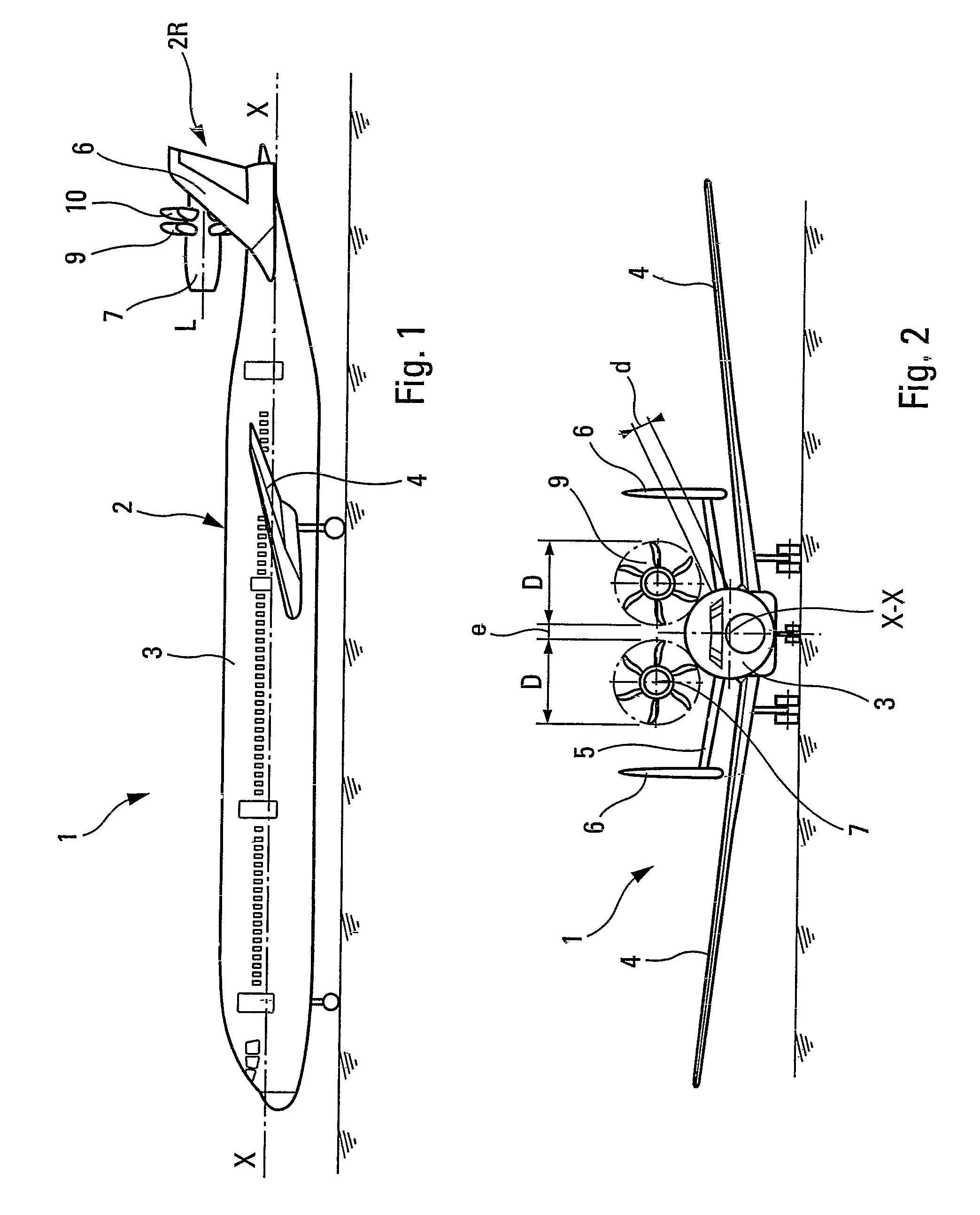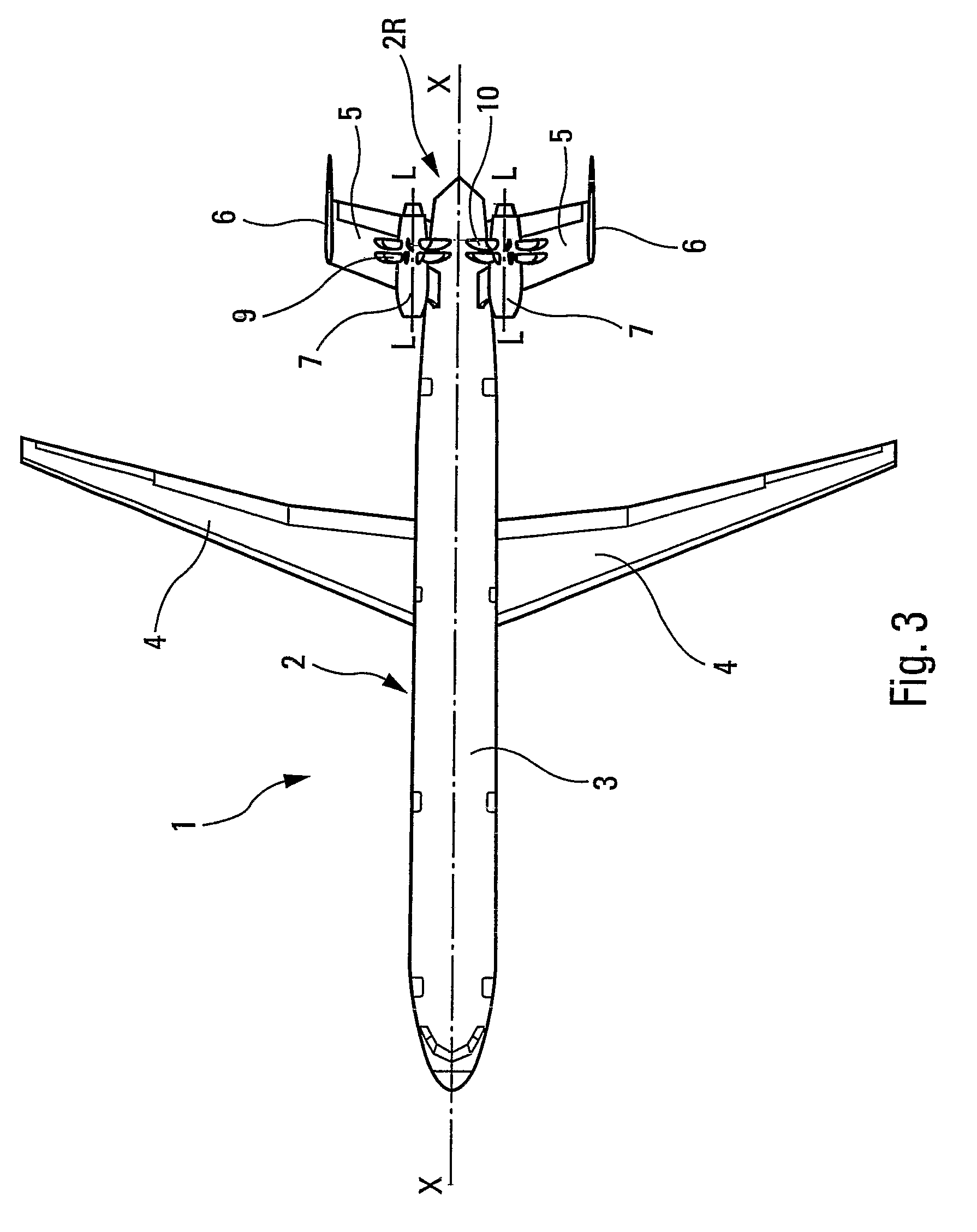Aircraft having a reduced environmental impact
a technology of environmental impact and aircraft, applied in the direction of propellers, air-flow influencers, transportation and packaging, etc., can solve the problems of increasing noise pollution, increasing noise pollution, and thus reaching noise pollution, so as to reduce the power (and therefore noise and fuel consumption) of the turbine engine, and the effect of easy integration of the engine on the aircra
- Summary
- Abstract
- Description
- Claims
- Application Information
AI Technical Summary
Benefits of technology
Problems solved by technology
Method used
Image
Examples
Embodiment Construction
[0030]The commercial airplane 1, according to the invention and depicted schematically in FIGS. 1 to 3, has a longitudinal axis X-X and comprises a cell 2 which consists of a fuselage 3, of wings 4, of a horizontal empennage 5 and of two vertical empennages 6. The wings 4 do not bear any engine and the vertical empennages 6 are positioned at the ends of the horizontal empennage 5.
[0031]Mounted at the rear of the airplane 1 are two propeller engines 7, positioned on the back of said airplane with their axes L-L parallel to the longitudinal axis X-X. The engines 7 are borne by pylons 8 (see also FIGS. 4 and 5) and are positioned side by side. At the rear end, each engine 7 has two un-cowled thrust-generating contra-rotating propellers 9, 10 of diameter D. The two propellers 9, on the one hand, and the two propellers 10, on the other, are positioned facing one another with a space e of at least 60 cm between them. Furthermore, the shortest distance d between the end of the propellers 9...
PUM
 Login to View More
Login to View More Abstract
Description
Claims
Application Information
 Login to View More
Login to View More - R&D
- Intellectual Property
- Life Sciences
- Materials
- Tech Scout
- Unparalleled Data Quality
- Higher Quality Content
- 60% Fewer Hallucinations
Browse by: Latest US Patents, China's latest patents, Technical Efficacy Thesaurus, Application Domain, Technology Topic, Popular Technical Reports.
© 2025 PatSnap. All rights reserved.Legal|Privacy policy|Modern Slavery Act Transparency Statement|Sitemap|About US| Contact US: help@patsnap.com



